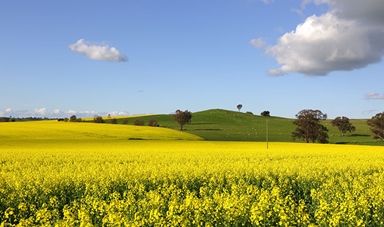At a glance
To date, 2020 has been a year like no other. From the catastrophic bushfires of summer to the COVID-19 pandemic, a series of extraordinary events have caused uncertainty and volatility far and wide.
This year has been particularly difficult for the Australian agricultural sector, which has tackled the added impediments of trade tensions and heightened international competition. Yet despite these challenges, in many regions, Australian farmers have seen one of the best starts to the year on record – due, in large part, to recent rainfall across much of eastern Australia, says Will Rayner, chief operating officer at Rural Bank.
“After prolonged drought, favourable seasonal conditions are forecast to continue for the remainder of the year,” he says.
Navigating agriculture’s highs and lows
According to Rural Bank’s latest mid-year outlook, the welcome departure from drought conditions is likely to boost the supply of fruit and vegetables, milk, cereals and canola over the next few months, and drive restocking activity for cattle and sheep producers.
On the flipside, prices are expected to fall across fruit, vegetables and dairy, as COVID-19 continues to disrupt consumer spending – a cruel blow to farmers already dealing with hefty losses from the bushfires.
For those affected, recovery will be a long-term prospect, says Will, adding: “While the bushfires are no longer in the news cycle, many people are still dealing with the effects and will take several years to rebuild.”
Meanwhile, COVID-19 has hit clothing sales hard – bad news for the wool industry, with demand unlikely to pick up until the 2020/21 northern hemisphere winter.
But for the most part, agriculture has demonstrated its resilience this year.
“The industry continues to produce products that are in high demand,” says Will, who reveals that early estimates for the value of exports show that beef increased 18.9 per cent, horticulture products 3.3 per cent, broadacre crops 2.4 per cent and dairy 2 per cent.
Likewise, there’s an opportunity for Australian beef to fill the protein gap in China caused by African swine fever. However, in this and other Asian markets, Australian suppliers face stiff competition from countries such as Brazil and the United States, who are working through a backlog of cattle cultivated during COVID-19-related disruptions earlier in the year.
Also in China, the new 80.5 per cent tariff placed on imported Australian barley has all but excluded farmers from their most lucrative market. While this has opened the door for exporters to explore options with other countries, such as Japan and Saudi Arabia, Will admits “these markets are more price sensitive and this will likely flow through to values at the farm gate”.
Driving farmland value
With Australian farmers responsible for approximately 385 million hectares, or 58 per cent, of the country’s land, agricultural property is a significant national asset.
In 2019, the median price per hectare of Australian farmland increased by 13.5 per cent, marking the sixth consecutive year of growth and bringing the 20-year compound annual growth rate to 7.5 per cent.
Farmland values will continue to escalate, thanks to factors such as low interest rates and a limited number of properties on the market, but it’s unlikely they’ll remain on the same trajectory.
Says Will: “We expect to see growth in the future, but below the levels seen in recent years.”


